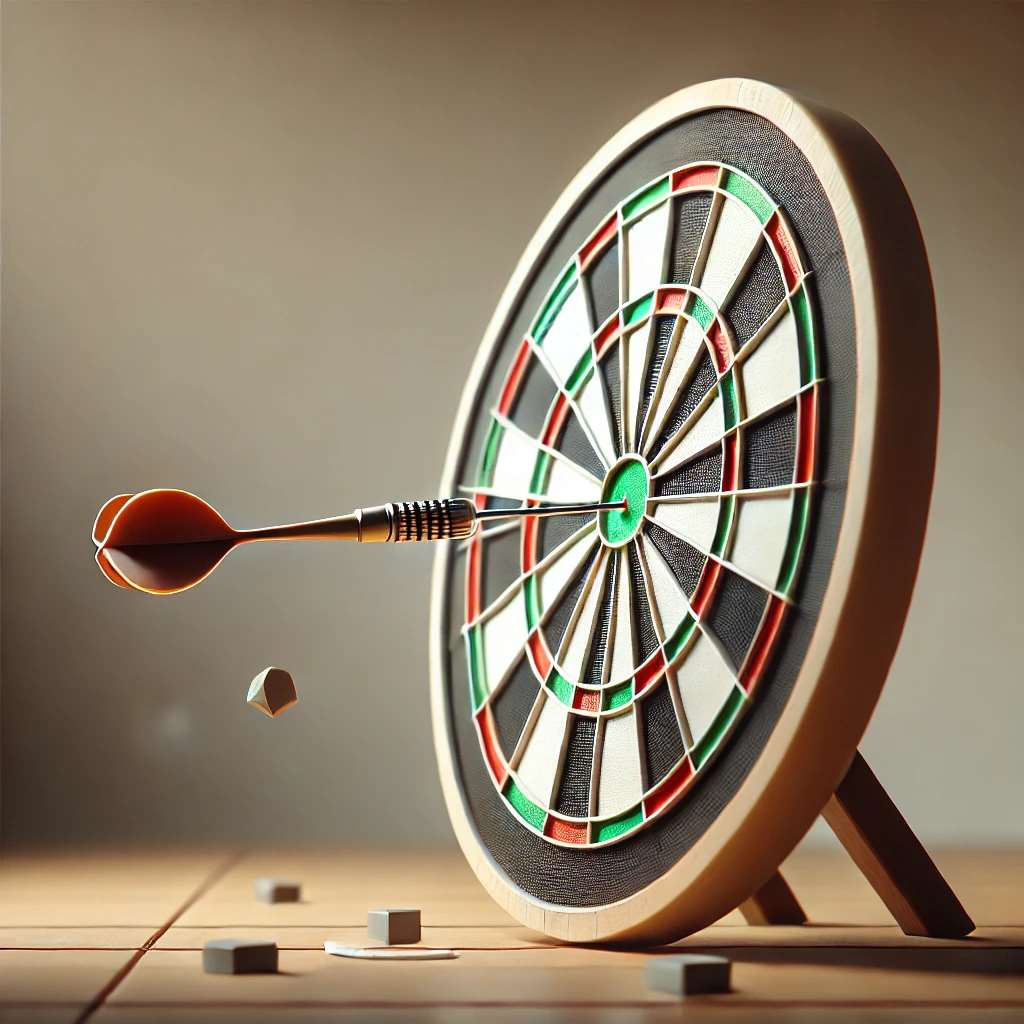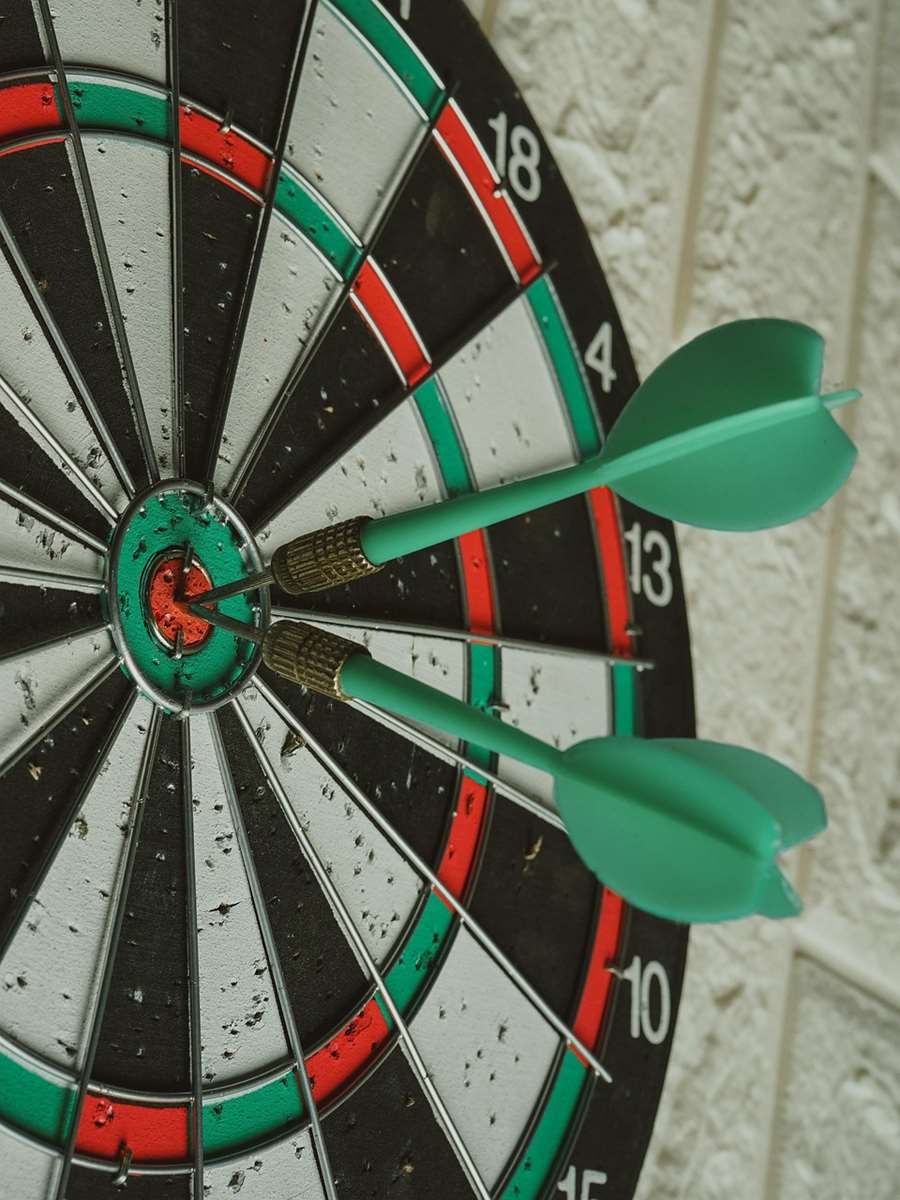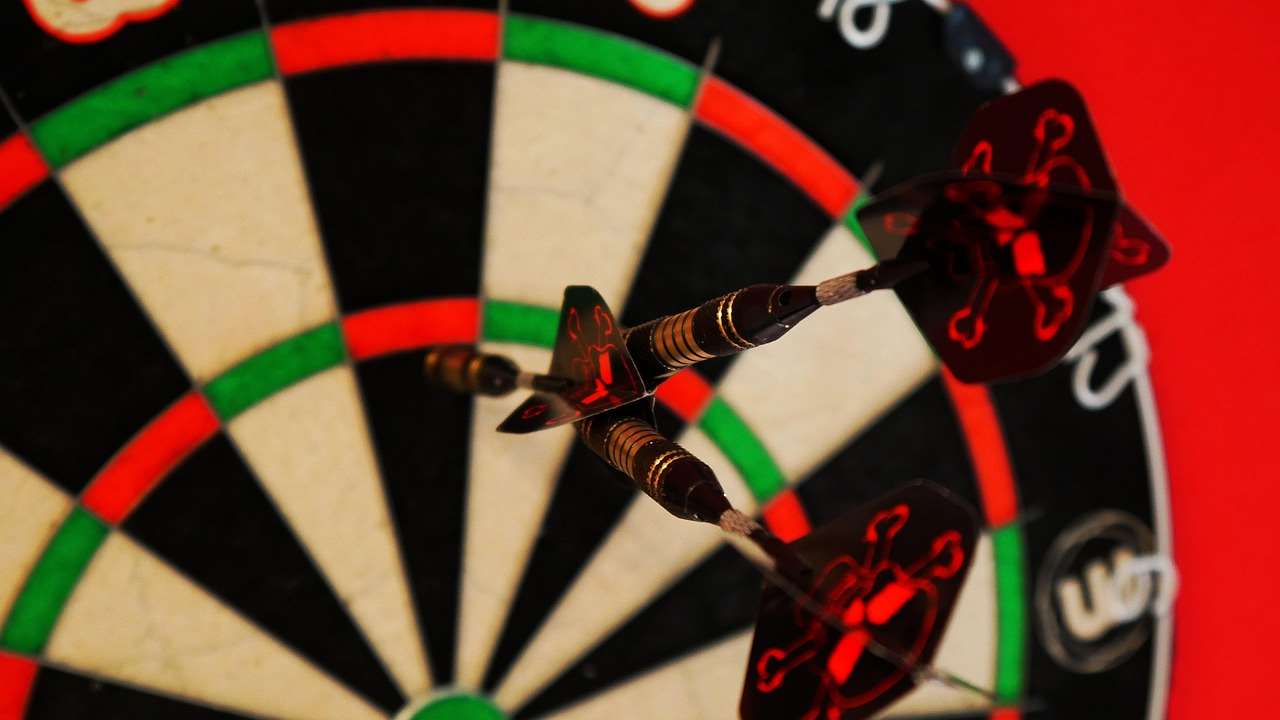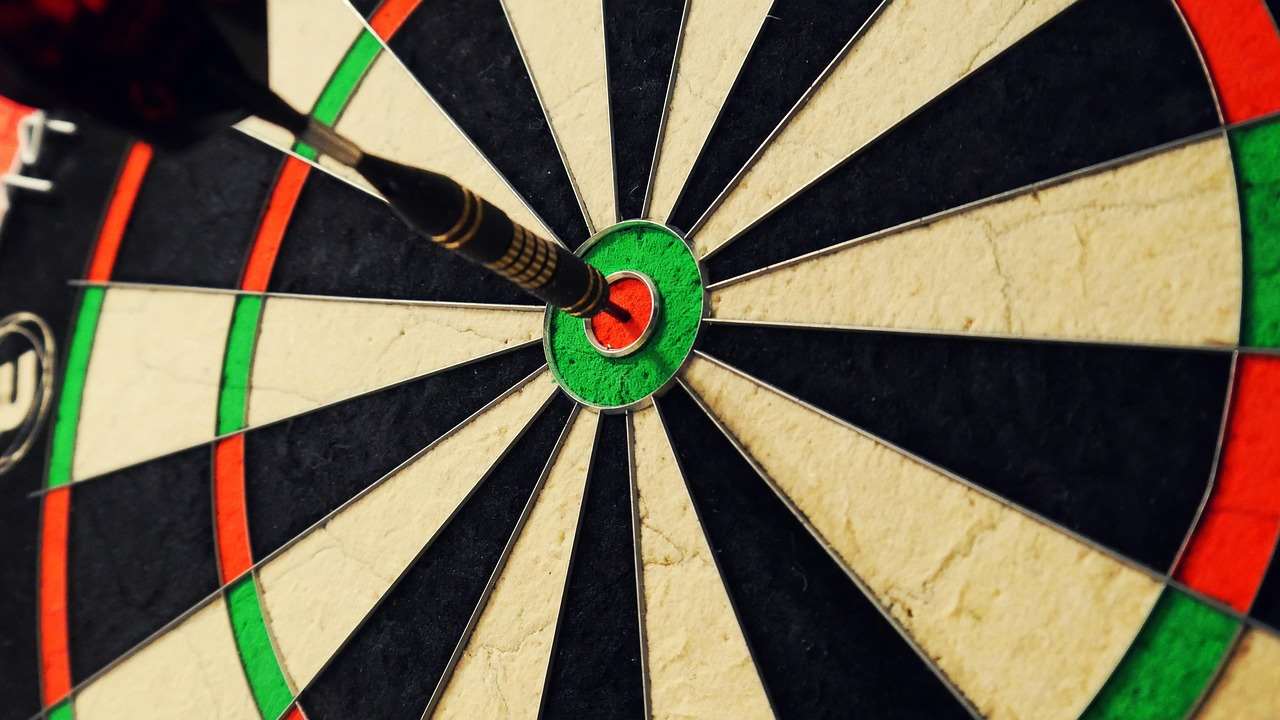Around the Clock darts, seemingly straightforward, boasts a fascinating history of tweaked rules and evolving challenges, resulting in several **historical variations of Around the Clock darts**. This article explores these variations, offering a glimpse into how players have adapted the game to suit different skill levels and preferences; you’ll discover various rule modifications, scoring systems, and even strategic approaches that have shaped this popular game.
⚠️ Still Using Pen & Paper (or a Chalkboard)?! ⚠️
Step into the future! The Dart Counter App handles all the scoring, suggests checkouts, and tracks your stats automatically. It's easier than you think!
Try the Smart Dart Counter App FREE!Ready for an upgrade? Click above!
Exploring the Core Concept: Around the Clock
Before diving into the **historical variations of Around the Clock darts**, it’s crucial to understand the fundamental premise. The standard game involves hitting each number on the dartboard, typically in sequential order from 1 to 20. The first player to successfully hit all numbers wins. This simplicity makes it a great game for Basic Darts Fundamentals for Beginners and experienced players alike.
The beauty of Around the Clock lies in its adaptability. Its structure provides a solid foundation upon which players can build new and exciting challenges. This flexibility has led to the numerous versions we’ll explore.
Common Variations in Target Sequence
One of the most prevalent areas of experimentation within Around the Clock involves the sequence of numbers targeted. While the standard version dictates a 1-to-20 progression, many players have adopted alternative sequences to add a layer of complexity or cater to specific skill levels.
Reverse Order (20 to 1)
Starting at 20 and working down to 1 offers a different psychological challenge. Players often find that hitting the higher numbers consistently requires a different focus and control. This **alternative scoring system** can be surprisingly challenging even for seasoned dart players.
Random Order
This variation introduces a significant element of unpredictability. Before the game begins, a random sequence of numbers is generated, and players must hit these numbers in the specified order. This requires adaptability and quick thinking, as players must constantly adjust their aim and strategy. The random order variation keeps players on their toes and prevents them from falling into a predictable rhythm.
Odd/Even Order
Players must hit all the odd numbers (1, 3, 5, etc.) before moving on to the even numbers (2, 4, 6, etc.), or vice-versa. This variation forces players to concentrate on specific sections of the board, promoting accuracy within those areas. A similar approach involves only targeting single, double or triple segments of each number.

Scoring System Adaptations
Beyond altering the target sequence, players have also experimented with the scoring system of Around the Clock. These adaptations often aim to increase the difficulty or reward exceptional accuracy.
Double/Triple Requirement
This popular variation mandates that each number must be hit in the double or triple segment to be considered “complete”. This significantly increases the difficulty, requiring pinpoint accuracy and consistent throwing. This is an excellent way to improve your **dart throwing technique**. This variation is especially challenging when played in reverse order or with a random sequence.
Bullseye Bonus
Some players incorporate a “bullseye bonus,” awarding extra points or allowing players to skip a number if they hit the bullseye. This adds an element of risk and reward, encouraging players to attempt more challenging shots. This bonus can also be adapted; two bullseyes may allow the player to skip two numbers, etc.
Limited Darts Per Number
To further challenge players, a rule can be implemented that limits the number of darts allowed to hit each number. For instance, a player might only have three darts to hit each number before moving on, regardless of success. This increases the pressure and emphasizes the importance of precision.
Strategic Gameplay Modifications
Many **historical variations of Around the Clock darts** involve strategic choices that impact gameplay. These modifications often add an element of tactical decision-making to the game.
“Cutthroat” Around the Clock
In this version, multiple players compete simultaneously. When a player hits a number, it is “claimed” and other players cannot score on that number until the first player has reached the next number. This introduces a competitive element of blocking and strategic targeting. It forces players to adapt their strategies based on their opponents’ progress.
Handicap Systems
To level the playing field between players of differing skill levels, various handicap systems can be implemented. A weaker player might be allowed to start from a lower number, or a stronger player might be required to hit doubles or triples for all numbers. This makes the game more enjoyable for everyone involved. Learning How to make darts fairer with handicap rules can greatly improve game enjoyment.

Team Play
Around the Clock can be adapted for team play. Players on a team alternate throws, working together to complete the sequence. This promotes teamwork and communication, and can be a fun way to enjoy the game with friends.
Regional Variations and Local Rules
It’s important to acknowledge that many **historical variations of Around the Clock darts** have evolved organically within specific regions or local dart communities. These variations often reflect unique preferences or adaptations specific to those areas.
Pub-Specific Rules
Many pubs or bars have their own house rules for Around the Clock, adding a local flavor to the game. These rules might involve specific penalties for missing the board, or bonus points for hitting certain combinations. These local rules contribute to the rich tapestry of darting traditions.
Tournament Variations
Some dart tournaments incorporate modified versions of Around the Clock as side events or warm-up games. These tournament variations often feature stricter rules or higher stakes, adding to the competitive atmosphere. Adapting darts rules for small spaces may be needed for such events
Adapting Around the Clock for Different Skill Levels
One of the greatest advantages of Around the Clock is its versatility in accommodating different skill levels. The game can be easily modified to provide a challenging yet enjoyable experience for players of all abilities.
Beginner-Friendly Modifications
For beginners, starting with a smaller number range (e.g., 1 to 10) or allowing multiple hits on each number can make the game more accessible. Removing the double/triple requirement is also beneficial for novice players. Consider Adapting darts rules for beginners to improve enjoyment.
Advanced Challenges
For experienced players, implementing the double/triple requirement, limiting darts per number, or playing in reverse or random order can provide a significant challenge. Combining multiple modifications can create an even more demanding game.

Modern Innovations and Online Adaptations
With the rise of online dart platforms and digital dartboards, Around the Clock has seen further innovation and adaptation. These modern adaptations often incorporate new features and technologies to enhance the gameplay experience.
Online Multiplayer
Online dart platforms allow players to compete in Around the Clock games against opponents from around the world. These platforms often offer various rule customization options, allowing players to tailor the game to their preferences. This makes it easy to explore different **fun dart game variations with modified rules**.
Digital Scoring and Tracking
Digital dartboards automatically track scores and provide real-time feedback on player performance. This eliminates the need for manual scoring and allows players to focus solely on their throwing. These boards often include different game types as well.
Augmented Reality (AR) Integration
Some developers are exploring the use of augmented reality to enhance the Around the Clock experience. AR overlays can provide visual aids, such as target indicators or trajectory predictions, to help players improve their accuracy.
The Enduring Appeal of Around the Clock
Despite the numerous **historical variations of Around the Clock darts**, the core game remains remarkably popular. Its simplicity, adaptability, and inherent challenge continue to attract players of all ages and skill levels. Whether played in a pub, at home, or online, Around the Clock offers a fun and engaging way to test one’s darting skills. Creative dart rules can keep players coming back for more.
Conclusion: Finding Your Perfect Variation
The rich history of Around the Clock demonstrates its remarkable adaptability. From simple sequence changes to complex scoring modifications, there’s a variation to suit every preference and skill level. Experiment with different rules, explore local traditions, and most importantly, have fun! By understanding the historical evolution and the available variations, you can tailor the game to create your perfect darting experience. Now grab your darts, experiment with these variations, and discover your favorite way to play Around the Clock! Explore Alternative darts rules for home play to discover what works best for you.

Ready to elevate your dart game? Visit our online store today for high-quality dartboards and accessories!

Hi, I’m Dieter, and I created Dartcounter (Dartcounterapp.com). My motivation wasn’t being a darts expert – quite the opposite! When I first started playing, I loved the game but found keeping accurate scores and tracking stats difficult and distracting.
I figured I couldn’t be the only one struggling with this. So, I decided to build a solution: an easy-to-use application that everyone, no matter their experience level, could use to manage scoring effortlessly.
My goal for Dartcounter was simple: let the app handle the numbers – the scoring, the averages, the stats, even checkout suggestions – so players could focus purely on their throw and enjoying the game. It began as a way to solve my own beginner’s problem, and I’m thrilled it has grown into a helpful tool for the wider darts community.